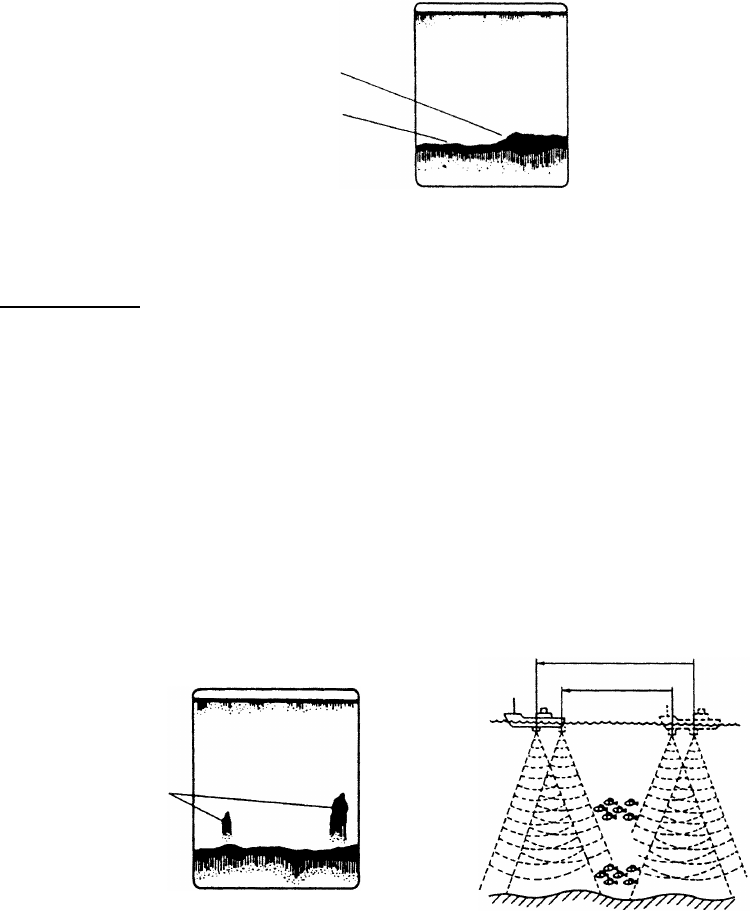
10. VIDEO SOUNDER OPERATION
10-26
Bottom nature
The nature of the bottom is known from the intensity and length of the bottom tail.
Generally, when observing the bottom nature, the lower sounding frequency is
used, the pulselength is set to long, and the gain setting is not disturbed. In the
hard and craggy bottom, the bottom appears in reddish brown with a long tail. In
the muddy or sandy bottom, the bottom appears less reddish and with a short
tail. However, the bottom with sediment may give a long tail if a low frequency
sounding is used.
Rock base
Mud & sand
Bottom nature
Fish schools
Fish quantity
Fish quantity can be estimated to a certain extent from fish echoes on the screen
if fish school size and fish school density are kept in mind.
Fish school size
Usually the size of fish echoes on the screen is proportional to the actual size of
the fish school. However, if two fish echoes appear at different depths with the
same size, the fish school at shallower depth is smaller because the ultrasonic
beam widens as it propagates and a fish school in deep water is displayed
larger.
Size of
fish school
Small
school
Large
school
School depth
and sounding
time
Deep fish school sounding time
Shallow fish school sounding time
Fish school size


















